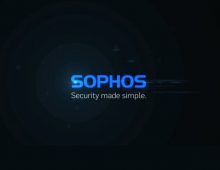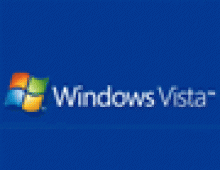
Top Ten Malware Threats Run on Microsoft Vista
Just one day after the official announcements for the release of Windows Vista for businesses, IT security firm Sophos announced that three of the top ten worms are capable of bypassing the operating system's security defences.
Sophos has revealed the most prevalent malware threats and hoaxes causing problems for computer users around the world during November 2006.
The figures, compiled from Sophos's global network of monitoring stations, show that the W32/Stratio-Zip worm has overtaken W32/Netsky-P as the most widely circulated piece of malware, accounting for one third of the total number of reports.
Sophos experts note that on the launch date of Microsoft's Windows Vista operating system, three of the top ten - including Stratio-Zip - are capable of bypassing the operating system's security defences and infecting users' PCs. The Vista-resistant malware - W32/Stratio-Zip, W32/Netsky-P and W32/MyDoom-O - comprise 39.7% of all malware currently circulating.
Sophos tested each piece of malware in the top ten on the Vista operating system to establish whether users running Vista without any third-party security software would avoid infection.
The results showed that while the Windows Mail email client (Vista's upgrade of Outlook) was able to identify and halt all of the threats, W32/Stratio-Zip, W32/Netsky-P and W32/MyDoom-O - each of which are commonly disseminated via email - were able to bypass the defences when accessed via a third-party web email client. This represents a serious issue for businesses who allow employees to access their personal email at work, as well as for companies that are considering adopting an alternative email client.
"There has been much speculation about whether Vista would render existing malware extinct, and the news is now in - it won't," said Carole Theriault, senior security consultant at Sophos. "While Microsoft should be commended for the huge security improvements it has made in Vista, running separate security software is still essential to eliminate the risk of infection. On top of this, cyber criminals will already be looking at creating Vista-specific malware. Users need to think carefully about whether their current solution is going to offer sufficient protection against such emerging threats, given that some vendors continue to experience problems adapting their software for the Vista operating environment."
The proportion of infected email continues to remain low, at just one in 357 (0.28%), while during November Sophos identified a record number of new threats - 7,612 - bringing the total number of malware protected against to 201,433.
The figures, compiled from Sophos's global network of monitoring stations, show that the W32/Stratio-Zip worm has overtaken W32/Netsky-P as the most widely circulated piece of malware, accounting for one third of the total number of reports.
Sophos experts note that on the launch date of Microsoft's Windows Vista operating system, three of the top ten - including Stratio-Zip - are capable of bypassing the operating system's security defences and infecting users' PCs. The Vista-resistant malware - W32/Stratio-Zip, W32/Netsky-P and W32/MyDoom-O - comprise 39.7% of all malware currently circulating.
Sophos tested each piece of malware in the top ten on the Vista operating system to establish whether users running Vista without any third-party security software would avoid infection.
The results showed that while the Windows Mail email client (Vista's upgrade of Outlook) was able to identify and halt all of the threats, W32/Stratio-Zip, W32/Netsky-P and W32/MyDoom-O - each of which are commonly disseminated via email - were able to bypass the defences when accessed via a third-party web email client. This represents a serious issue for businesses who allow employees to access their personal email at work, as well as for companies that are considering adopting an alternative email client.
"There has been much speculation about whether Vista would render existing malware extinct, and the news is now in - it won't," said Carole Theriault, senior security consultant at Sophos. "While Microsoft should be commended for the huge security improvements it has made in Vista, running separate security software is still essential to eliminate the risk of infection. On top of this, cyber criminals will already be looking at creating Vista-specific malware. Users need to think carefully about whether their current solution is going to offer sufficient protection against such emerging threats, given that some vendors continue to experience problems adapting their software for the Vista operating environment."
The proportion of infected email continues to remain low, at just one in 357 (0.28%), while during November Sophos identified a record number of new threats - 7,612 - bringing the total number of malware protected against to 201,433.



















